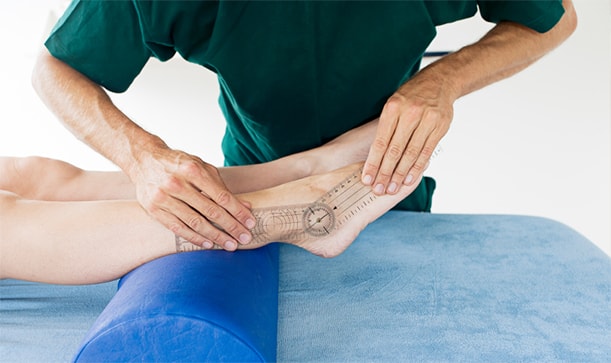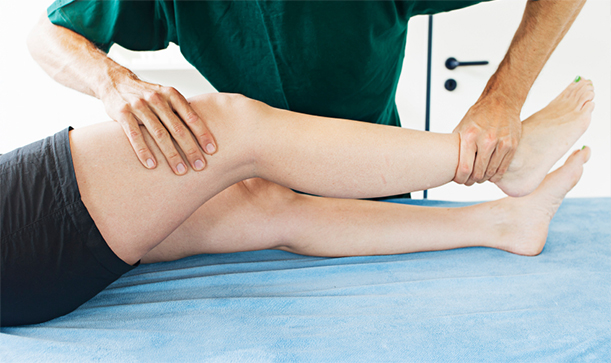CK Physiotherapy
AREAS COVERED
W7, W5, W13, Ealing, West London
57 Elthorne Avenue
Hanwell, W7 2JY
T: 020 8566 4113
M: 079 572 46185
E: info@ckphysio.co.uk
Location / Parking
We are situated in Hanwell, between Boston Manor Road and Northfields Avenue, south of the Uxbridge Road.57 Elthorne Avenue
Hanwell, W7 2JY
There are parking restrictions Mon - Fri 9-10am and 2-3pm. If you need a permit during this time please inform your therapist when you arrive. There are no parking restrictions at other times.
Opening Times
Please phone the number above during working hours to make an appointment. Our reception service will be happy to book your session.
London Underground / Bus Services
London Underground
10 min. walk from Boston Manor Tube Station.
15 min. walk from Northfields Tube Station.
Bus Service
E8, E3, E2, 207, 607, 83
Request Call Back
Our Blog
Recover from Whiplash with Physiotherapy Treatment Techniques
By: BryanKelly (Psst, View author in Google Plus) Date: Sep 5th, 2019Whiplash is an injury to the neck caused by the abrupt, forceful jerking motion of the head. A sudden front-to-back or side-on impact forcing the head and neck to be briskly whipped from one side to the other can cause muscles, ligaments, and tendons in the neck to over-extended or torn.
Severe cases of whiplash may result in damage to nerves and intervertebral joints or cervical discs. Symptoms of whiplash may be delayed following the initial trauma but, this painful injury is difficult to ignore. With proper diagnosis and treatment, you can successfully recover from an unforeseen whiplash injury.

How Does Whiplash Occur?
We often think of whiplash as resulting from a motor vehicle accident. In fact, automobile accidents are the leading cause of whiplash. The impact from a motor vehicle collision, even a vehicle travelling at low speeds of 15 mph, produces an unexpected exertion of force on our bodies that can potentially damage soft tissue, ligaments, and muscles.
Whiplash can also result from a slip, trip, or fall. During a fall, the head and neck can experience the same forceful movements as those motions produced during a motor vehicle collision. Sporting scenarios, particularly contact sports, also have the potential to cause whiplash. Athletes in motion exert a tremendous amount of force when a collision occurs either between athletes or with by colliding with an immobile object. The severity of whiplash depends on the type of motion and amount of force exerted during an accident.
What Are Common Symptoms of Whiplash?
Neck pain, from mild to severe, occurring within 24-hours or more after an accident is the most prevalent symptom of whiplash. Pain can be accompanied by stiffness, decreased range of motion, muscle spasms, and muscle knots in the neck and shoulder region. Symptoms of whiplash have potential to extend throughout one's shoulders and upper back region and down one's arms. Headaches or dizziness may result from severe whiplash, as well as sleep disturbance or fatigue.
Whiplash can be accompanied by a concussion which can be a serious health concern that requires immediate medical attention. If you experience a headache and your symptoms persist or become worse, you should seek medical attention immediately. Symptoms to indicate a potential concussion may include unconsciousness, headache, dizziness, weakness, confusion, difficulty speaking, fatigue, and nausea.
How To Diagnose Whiplash
The head and neck region of our bodies is a very fragile region. If you believe you are suffering whiplash from a recent accident you should not hesitate to seek medical consultation in order to obtain a proper diagnosis. A strained or torn muscle or ligament due to hyperflexing and hyperextending can be readily diagnosed.
However, identifying damage to intervertebral joints or cervical discs may require the use of specialised imaging tests such as CT scans or MRI. Your medical provider will assist you to accurately diagnose whiplash based on your symptoms.
How To Treat Whiplash
Treatment of whiplash may vary depending on the severity of the injury. Fortunately, most people who experience whiplash do recover within three-months of the injury's occurrence. The first step toward whiplash treatment after an accident is to stabilise the head and neck region of the body. The stabilisation will prevent further damage. Applying ice or a cold pack to the injured region within 48 to 72 hours of injury will reduce the amount of swelling and pain. It is recommended to keep ice or a cold pack on the injury fo 15 to 20-minute intervals, repeated hourly.
After initial treatment and medical consultation, there are a few things you can do to maintain your comfort while whiplash proceeds to heal:
• Minimise movement of your head and neck.
• Avoid any strenuous activities.
• Avoid heavy lifting.
• Take pain medication, anti-inflammatory medication, or muscle relaxation medication as prescribed by your medical provider.
• Use an orthopaedic pillow to alleviate your injury; high pillows that extend the neck can potentially aggravate whiplash.
• Provide healing interventions such as physiotherapy, ultrasound, massage, or acupuncture as overseen by your medical provider.
Recovery & Prevention Methods
Although your body will start healing soon, do not risk a thorough recovery by rushing the healing process. Remember, the head and neck are a delicate region of our bodies. Taking time to heal will avoid you experiencing further injury or chronic pain in the future. Physiotherapy is a highly recognised, dynamic intervention that can facilitate your long-term recovery and prevention of re-injury or chronic pain.
Physiotherapists are highly skilled at providing hands-on, natural treatment techniques to aid your recovery from whiplash. Physiotherapy techniques include but are not limited to:
• Manipulative therapy; for non-invasive spinal and peripheral joint manipulation.
• Massage therapy; soft tissue massage and mobilisation.
• Exercise therapy; passive and active personalised exercise programs.
• Instruction for proper lifting techniques.
• Posture correction.
• Muscle stabilisation.
• Ergonomic advice; to reduce recurrent muscle strain and prevent injury.
• Electrotherapy; ultrasound, utilised to gently treat damaged tissue.
Strengthening exercises can keep your neck strong and flexible. While it can be difficult to prevent whiplash, as it typically occurs from an unforeseen accident, a robust and limber neck will be more resistant to injury. Naturally, utilise your neck to keep it active. If your work environment keeps you seated or stationary for long periods of time, remember to take frequent breaks to stand and walk. A healthy, active neck is more resilient.
Experienced physiotherapists at CK Physiotherapy are available to assist you with a recovery and prevention program for whiplash. If you have incurred this unpleasant injury, you do not need to suffer from persistent symptoms. Whiplash can be detrimental to your ability to comfortably perform day-to-day activities. Additionally, if left untreated whiplash can result in permanent head, neck, or back injury and cause you chronic pain. Accidental injuries are unpleasant but, recovery aided by seasoned professionals can keep you healing properly and get you back to your normal level of activity in no time!





